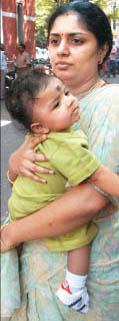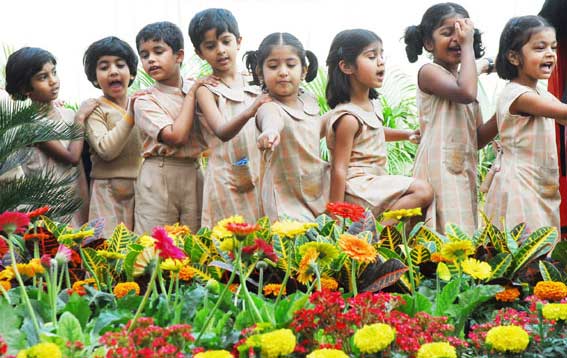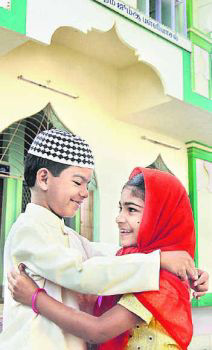India - Order FREE Travel Brochure! Language Schools and Language Study Vacations - Order FREE Travel Brochure!
AN APPEAL FOR SUPPORT
- We seek your support to meet expenses relating to formatting of articles and books, maintaining and running the journal through hosting, correrspondences, etc.Please write to the Editor in his e-mail address mthirumalai@comcast.net to find out how you can support this journal.
Also please use the AMAZON link to buy your books. Even the smallest contribution will go a long way in supporting this journal. Thank you. Thirumalai, Editor.
BOOKS FOR YOU TO READ AND DOWNLOAD FREE!
- A STUDY OF THE SKILLS OF READING
COMPREHENSION IN ENGLISH DEVELOPED BY STUDENTS OF STANDARD IX IN THE SCHOOLS IN TUTICORIN DISTRICT, TAMILNADU ...
A. Joycilin Shermila, Ph.D. - A Socio-Pragmatic Comparative Study of Ostensible Invitations in English and Farsi ...
Mohammad Ali Salmani-Nodoushan, Ph.D. - ADVANCED WRITING - A COURSE TEXTBOOK ...
Parviz Birjandi, Ph.D.
Seyyed Mohammad Alavi, Ph.D.
Mohammad Ali Salmani-Nodoushan, Ph.D. - TEXT FAMILIARITY, READING TASKS, AND ESP TEST PERFORMANCE: A STUDY ON IRANIAN LEP AND NON-LEP UNIVERSITY STUDENTS - A DOCTORAL DISSERTATION ...
Mohammad Ali Salmani-Nodoushan, Ph.D. - A STUDY ON THE LEARNING PROCESS OF ENGLISH
BY HIGHER SECONDARY STUDENTS
WITH SPECIAL REFERENCE TO DHARMAPURI DISTRICT IN TAMILNADU ...
K. Chidambaram, Ph.D. - SPEAKING STRATEGIES TO OVERCOME COMMUNICATION
DIFFICULTIES IN THE TARGET LANGUAGE SITUATION - BANGLADESHIS IN NEW ZEALAND ...
Harunur Rashid Khan - THE PROBLEMS IN LEARNING MODAL AUXILIARY VERBS IN ENGLISH AT HIGH SCHOOL LEVEL ...
Chandra Bose, Ph.D. Candidate - THE ROLE OF VISION IN LANGUAGE LEARNING
- in Children with Moderate to Severe Disabilities ...
Martha Low, Ph.D. - SANSKRIT TO ENGLISH TRANSLATOR ...
S. Aparna, M.Sc. - A LINGUISTIC STUDY OF ENGLISH LANGUAGE CURRICULUM AT THE SECONDARY LEVEL IN BANGLADESH - A COMMUNICATIVE APPROACH TO CURRICULUM DEVELOPMENT by
Kamrul Hasan, Ph.D. - COMMUNICATION VIA EYE AND FACE in Indian Contexts by
M. S. Thirumalai, Ph.D. - COMMUNICATION
VIA GESTURE: A STUDY OF INDIAN CONTEXTS by M. S. Thirumalai, Ph.D. - CIEFL Occasional
Papers in Linguistics,
Vol. 1 - Language, Thought
and Disorder - Some Classic Positions by
M. S. Thirumalai, Ph.D. - English in India:
Loyalty and Attitudes
by Annika Hohenthal - Language In Science
by M. S. Thirumalai, Ph.D. - Vocabulary Education
by B. Mallikarjun, Ph.D. - A CONTRASTIVE ANALYSIS OF HINDI
AND MALAYALAM
by V. Geethakumary, Ph.D. - LANGUAGE OF ADVERTISEMENTS
IN TAMIL
by Sandhya Nayak, Ph.D. - An Introduction to TESOL:
Methods of Teaching English
to Speakers of Other Languages
by M. S. Thirumalai, Ph.D. - Transformation of
Natural Language
into Indexing Language:
Kannada - A Case Study
by B. A. Sharada, Ph.D. - How to Learn
Another Language?
by M.S.Thirumalai, Ph.D. - Verbal Communication
with CP Children
by Shyamala Chengappa, Ph.D.
and M.S.Thirumalai, Ph.D. - Bringing Order
to Linguistic Diversity
- Language Planning in
the British Raj by
Ranjit Singh Rangila,
M. S. Thirumalai,
and B. Mallikarjun
REFERENCE MATERIAL
- UNIVERSAL DECLARATION OF LINGUISTIC RIGHTS
- Lord Macaulay and
His Minute on
Indian Education - In Defense of
Indian Vernaculars
Against
Lord Macaulay's Minute
By A Contemporary of
Lord Macaulay - Languages of India,
Census of India 1991 - The Constitution of India:
Provisions Relating to
Languages - The Official
Languages Act, 1963
(As Amended 1967) - Mother Tongues of India,
According to
1961 Census of India
BACK ISSUES
- FROM MARCH 2001.
- FROM JANUARY 2002.
- INDEX OF ARTICLES
FROM MARCH, 2001
to APRIL 2007. - INDEX OF AUTHORS
AND THEIR ARTICLES
FROM MARCH, 2001
- APRIL 2007
- E-mail your articles and book-length reports in Microsoft Word to mthirumalai@comcast.net.
- Contributors from South Asia may send their articles to
B. Mallikarjun,
Central Institute of Indian Languages,
Manasagangotri,
Mysore 570006, India or e-mail to mallikarjun@ciil.stpmy.soft.net. PLEASE READ THE GUIDELINES GIVEN IN HOME PAGE IMMEDIATELY AFTER THE LIST OF CONTENTS. - Your articles and booklength reports should be written following the MLA, LSA, or IJDL Stylesheet.
- The Editorial Board has the right to accept, reject, or suggest modifications to the articles submitted for publication, and to make suitable stylistic adjustments. High quality, academic integrity, ethics and morals are expected from the authors and discussants.
Copyright © 2007
M. S. Thirumalai
FLOWERS AND FRAGRANCE
Some Considerations About
Children's Literature in India
V.V.B.Rama Rao, Ph.D.
Each Child is a Unique Flower

All children are lovable and each child is a unique flower. The best gift for a child is a storybook. Child heroes and heroines leave lasting impressions on children and adults alike. Children's Literature is a literary genre in no way inferior or less worthy of the attention of scholars and critics. Panchatantra, Hitopadesha, etc were basically fable-cloaked for moral edification and unveiling the ways of the world. They are food for children's thought and entertainment. Down the ages, this literature has come down but never had the status of a discipline of study. It is time it received adequate scholarly and critical attention. Its methods, techniques and devices are unique creative stimuli. Every language in our country has a treasure of this genre. Eminent intellectuals have been exercising their minds on Children's Literature.
Here is K.S.Karanth's seminal statement:
We in India have seldom bothered to delve deep into the inexhaustible treasures of nature. How many of our poets and literary men are bird watchers, wild life enthusiasts and lovers of nature in all aspects? There is no dearth of material for writing for the young, but when we elders lack experience and appreciation of the above-said repository, very little will come through our pens. … This basic drawback has come from our lack of proper education. We have made childhood a sort of vessel, which has to be filled up, by elders and teachers with material that the consider useful, or worthwhile…. (1)
The Role of Children's Literature

Children's literature plays a vital role in shaping the individual's personality in the formative years. With an impressionable, plastic mind, a child looks around the world and goes on slowly acquiring understanding and insight. Children grow anyway but aiding them to grow in a happy and enlightening way needs proper tending. While education has a big part to play, reading is one of the most important inputs for the mind to mature into ever-widening vistas of thought and action. The ability to respond positively depends on a child's exposure to rational and well-considered choice of action with right attitudes in pursuing and achieving goals worthwhile.
This form of literature is drawn from the native ethos, from the family, the nation and basic human nature. To begin with, the elders around, most importantly the parents and elders in the family and the incidents, make the child imbibe habits and values.
Children's Literature in Indian Languages
Each of our bhashas is a product of a constituent culture within the diverse yet unified grand, national culture. The role that literature the child reads or introduced to being vitally mind shaping, writing for children needs to be a carefully designed, purpose-oriented activity. This genre with many forms has not received significant attention from critics and literary historiographers.
Comparative studies of the writing for children rooted in national ethos and culture in our bhashas would be a valuable exercise what with the erosion of values that our intellectuals find all around. With so much of Children's Literature extant, no systematic or sustained effort has gone in to analyze it comparatively with a view to understand the achievements in our various bhashas. A project designed for this could well be a beginning.
Story for a Child
Story for a child came into being from its mother, granny or grandpa right from the times of the cave man. Children's Literature is a unique component of a nation's cultural blossoming. A nation's uniqueness rests squarely on its culture and its nobility and pervasiveness. The children's literature produced in a country like ours has multiplicity not merely in its various languages but also in the way the forms of that branch of literature, which flourished down the ages. The languages and genres may vary but the cultural ethos remains the same with small regional variations. The variety and vibrancy of literature in a particular age in a particular age varies.
Writing for Children - A Unique Component of a Nation's Literature

Use of the Roman Script in India | Segmental Marketing and Language Use in India | Process Or Product: An Explorative/Comparative Study of ESL/EFL Writing Behaviours | UNESCO Universal Declaration on Cultural Diversity | Flowers and Fragrance: Some Considerations about Children's Literature in India | A UNESCO Report on Linguistic Diversity and Knowledge Societies | The Interaction between Field Dependent/Independent Learning Styles and Learners’ Linguality in Third Language Acquisition | Towards Self-Discovery: A Comparative Study of the Lead Characters in Anita Nair's Ladies' Coupé and The Better Man | HOME PAGE OF MAY 2007 ISSUE | HOME PAGE | CONTACT EDITOR
V. V. B.Rama Rao, Ph.D.
C-7 New Township
BTPS, Badarpur
New Delhi-110 044
India
vvbramarao@yahoo.com
- Send your articles
as an attachment
to your e-mail to
mthirumalai@comcast.net. - Please ensure that your name, academic degrees, institutional affiliation and institutional address, and your e-mail address are all given in the first page of your article. Also include a declaration that your article or work submitted for publication in LANGUAGE IN INDIA is an original work by you and that you have duly acknolwedged the work or works of others you either cited or used in writing your articles, etc. Remember that by maintaining academic integrity we not only do the right thing but also help the growth, development and recognition of Indian scholarship.

